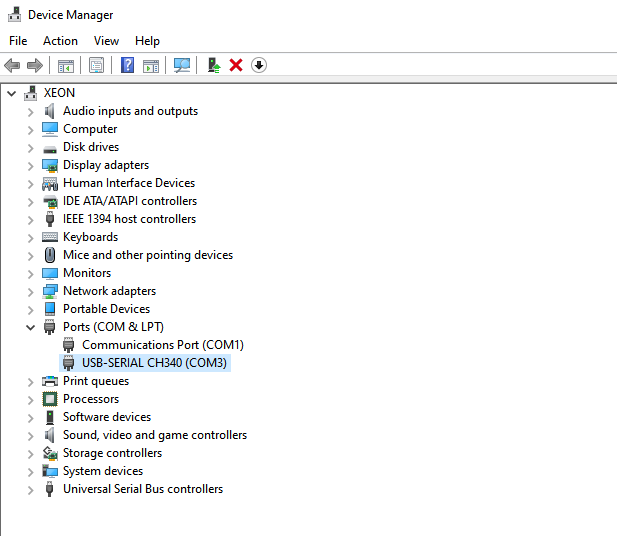

- Install ch340g driver how to#
- Install ch340g driver install#
- Install ch340g driver drivers#
- Install ch340g driver driver#
Once it’s done, close the Boards Manager. As of this writing it has to download ~150mb of data. Click it and the installation process will begin. The location is inconsistent, and IMHO the button should always be visible if the plugin has not been installed. A button labelled “install” will appear nearby. Click once anywhere on the description text.

You can see in my copy I’ve already installed the plugin. There are a lot of boards here! In the search field type “esp8266”, which is the name of the Wifi module at the heart of the NodeMCU.

Now your Arduino IDE knows that NodeMCU boards exist. In the field that says “Additional Boards Manager URLs” add “” and hit OK.
Install ch340g driver install#
We need to add NodeMCU to the list of possible microcontrollers and then tell Arduion “Please download and install support for NodeMCU.”įire up Arduino IDE and go to File > Preferences. This does two useful things: it keeps the download smaller for them (less $) and it means new users are not swamped with lots of options they may never use. Arduino has a list of possible microcontrollers (boards) that it can support if you ask it to add support. We’re almost done! This next bit is pretty easy. Please post OSX-specific instructions them in the comments below. NodeMCU should now appear as a COM port on your Windows 10 computer.
Install ch340g driver driver#
You’ll need to download the official driver and install it yourself.ĭownload and extract the files, then run the Windows 10 installer.
Install ch340g driver how to#
Windows doesn’t know how to talk to the USB driver on the NodeMCU so it can’t figure out that the board is a NodeMCU and proceed normally. Unfortunately as of writing this post when I plug a brand new NodeMCU into a new Windows 10 installation with a micro USB cable I get a warning message that says “USB Device Not Recognized – Device Descriptor Request Failed”.
Install ch340g driver drivers#
Mostly these days devices download and install drivers on their own, automagically. This part of the instructions are written for Windows.

Read on for the two steps that have to be done only once. We’ve done the hard work of figuring out the NodeMCU drivers and NodeMCU Arduino IDE setup for you. Then lsmod | grep ch34 returns nothing.The first time using a new microcontroller is what I call funstrating, especially if you don’t have clear instructions. RTS5129 Card Reader Controllerīus 002 Device 001: ID 1d6b:0002 Linux Foundation 2.0 root hub Touchscreenīus 002 Device 002: ID 0bda:0129 Realtek Semiconductor Corp. If not you can download the Linux CH340 Driver (but I’d recommend just upgrading your Linux install so that you get the “built in” one).īus 001 Device 002: ID 8087:8001 Intel Corp.īus 001 Device 001: ID 1d6b:0002 Linux Foundation 2.0 root hubīus 003 Device 001: ID 1d6b:0003 Linux Foundation 3.0 root hubīus 002 Device 005: ID 0cf3:e300 Qualcomm Atheros Communicationsīus 002 Device 004: ID 5986:0701 Acer, Inc Lenovo Eas圜ameraīus 002 Device 003: ID 04f3:2052 Elan Microelectronics Corp. The help page says the CH341 driver should already be installed.ĭrivers are almost certainly built into your Linux kernel already and it will probably just work as soon as you plug it in. The instructions were given for Windows and I am using Ubuntu Linux. I need to install the CH340 usb driver on this page it attaches to the Arduino machine.


 0 kommentar(er)
0 kommentar(er)
